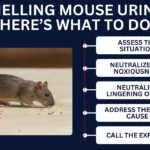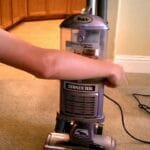Air conditioners are essential for comfort, especially during hot seasons. But even the best units can face issues.
Understanding Hitachi air conditioner troubleshooting can save you time and money. Whether it’s a minor glitch or a significant problem, knowing how to tackle common issues can help. This guide will walk you through simple steps to diagnose and fix your Hitachi air conditioner.
From strange noises to cooling problems, we cover it all. With clear and easy instructions, you’ll have your air conditioner running smoothly in no time. Let’s dive into the world of Hitachi air conditioner troubleshooting and ensure your home stays cool and comfortable.
Common Issues
Hitachi air conditioners are known for their reliability. But, like any appliance, they can face issues. Understanding common problems can help you troubleshoot quickly.
No Power
No power is a frequent issue. First, check if the air conditioner is plugged in. Ensure the outlet works by testing it with another device. If the outlet is fine, inspect the power cord for damage. Sometimes, a tripped circuit breaker can be the problem. Reset the breaker and see if the unit turns on. If the issue persists, there might be an internal fault. Professional help may be necessary.
Poor Cooling
Poor cooling can be frustrating. Start by checking the thermostat settings. Make sure the temperature is set lower than the room temperature. Dirty filters can reduce cooling efficiency. Clean or replace the filters regularly. Check for any obstructions around the unit. Clear away debris and ensure good airflow. Low refrigerant levels can also cause poor cooling. A technician should handle refrigerant issues.
Water Leakage
Water leakage is another common problem. Check the drainage pipe for clogs. Blocked pipes can cause water to back up and leak. Ensure the unit is installed level. An unlevel unit can cause water to collect inside. Clean the air filters and the evaporator coil. Dirty components can lead to excess moisture. If leakage continues, the issue might be internal. Professional inspection is recommended.

Credit: www.supertechhvac.com
Tools You Need
When troubleshooting a Hitachi air conditioner, having the right tools is essential. These tools help diagnose issues and perform repairs effectively. Below are the basic and specialized tools you need for efficient troubleshooting.
Basic Tools
- Screwdrivers: A set of Phillips and flat-head screwdrivers for opening panels.
- Wrenches: Various sizes, including adjustable wrenches, for tightening and loosening nuts and bolts.
- Pliers: Needle-nose and slip-joint pliers for gripping and pulling components.
- Multimeter: An essential tool for checking voltage, current, and resistance.
- Flashlight: To see inside dark areas of the air conditioner unit.
- Wire Cutters: For cutting and stripping wires during electrical repairs.
- Level: Ensures that your unit is installed or reinstalled evenly.
Specialized Tools
In addition to basic tools, certain specialized tools are necessary for more complex troubleshooting tasks. These tools help in diagnosing and fixing specific issues unique to air conditioning systems.
| Tool | Purpose |
|---|---|
| Manifold Gauge Set | Measures refrigerant pressure and helps in recharging the system. |
| Thermometer | Checks the temperature of air flow and coolant lines. |
| Vacuum Pump | Removes moisture and air from the refrigerant system. |
| Fin Comb | Straightens bent fins on the condenser and evaporator coils. |
| Leak Detector | Identifies refrigerant leaks in the system. |
| Clamp Meter | Measures current without disconnecting wires. |
These tools enable you to tackle both common and complex problems with your Hitachi air conditioner. Always ensure you have them at hand before starting any troubleshooting process.
Initial Checks
Troubleshooting your Hitachi air conditioner can be simple with some initial checks. Start with the basics to save time and avoid unnecessary repairs. Follow these steps to ensure your unit is functioning correctly.
Power Supply
First, check if your air conditioner is receiving power. Ensure the power cord is securely plugged into the socket. Verify that the outlet is working by plugging in another device. If the outlet is functional, inspect the circuit breaker. The breaker should not be tripped. Reset it if necessary.
Additionally, look for any visible damage on the power cord. Damaged cords can prevent the unit from powering on. If the cord is damaged, replace it immediately.
Remote Control
Next, examine the remote control. Ensure it has fresh batteries. Weak or dead batteries can cause the remote to malfunction. Replace the batteries if needed.
Clean the remote control sensor on both the remote and the air conditioner unit. Dust and dirt can block the signal. Use a soft cloth to clean the sensors gently.
Check the remote for any visible damage. A damaged remote may not function properly. Consider replacing the remote if it appears faulty.
Thermostat Settings
Review the thermostat settings on your air conditioner. Ensure the unit is set to the desired temperature. Adjust the temperature if it is too high or too low.
Make sure the mode is set correctly. For cooling, the mode should be set to “Cool” or “Auto.” If the mode is incorrect, the air conditioner may not cool the room effectively.
Finally, verify the fan settings. The fan should be set to “Auto” or “High” for optimal performance. Incorrect fan settings can impact the unit’s efficiency.
Cleaning The Filters
Cleaning the filters of your Hitachi air conditioner is vital. It ensures optimal performance and air quality. Dirty filters can reduce efficiency and increase energy consumption. Regular cleaning can extend the lifespan of your unit. Follow these simple steps to keep your filters clean and functional.
Removing Filters
First, turn off the air conditioner and unplug it. Open the front panel carefully. Locate the filters inside the unit. Gently slide the filters out. Be cautious to avoid damaging them. Place them on a clean surface.
Washing Filters
Use a soft brush to remove loose dust. Rinse the filters under lukewarm water. Avoid using hot water or harsh detergents. Gently scrub with a mild soap if needed. Shake off excess water. Let the filters air dry completely.
Reinstalling Filters
Ensure the filters are completely dry. Slide the filters back into their slots. Close the front panel securely. Plug in the air conditioner. Turn it on to check for proper operation.
Inspecting The Coils
Regular inspection of your Hitachi air conditioner’s coils can prevent many common issues. Dirty or damaged coils can reduce efficiency and cause the unit to work harder. Let’s look at the two main types of coils: the evaporator coils and the condenser coils.
Evaporator Coils
The evaporator coils are inside the indoor unit of your air conditioner. These coils absorb heat from the air inside your home. Over time, dust and dirt can accumulate on the coils. This buildup can block the heat exchange process, causing the unit to cool less effectively.
To inspect the evaporator coils:
- Turn off the power to the air conditioner.
- Remove the access panel from the indoor unit.
- Check the coils for dirt, dust, or ice buildup.
If you see dirt or dust, clean the coils with a soft brush or a vacuum cleaner with a brush attachment. For stubborn dirt, you can use a coil cleaner spray. Always follow the manufacturer’s instructions.
Condenser Coils
The condenser coils are located in the outdoor unit. These coils release the heat absorbed by the evaporator coils to the outside air. Like the evaporator coils, they can also get dirty over time. This dirt reduces the unit’s efficiency and can cause overheating.
To inspect the condenser coils:
- Turn off the power to the air conditioner.
- Remove any debris around the outdoor unit.
- Check the coils for dirt, leaves, or other debris.
Clean the condenser coils with a garden hose. Spray the coils from the inside out to remove debris. Do not use a pressure washer, as it can damage the coils. For stubborn dirt, use a coil cleaner spray.
Regular inspection and cleaning of the coils can keep your Hitachi air conditioner running efficiently. It can also extend the lifespan of the unit.

Credit: africa-ird.org
Checking The Refrigerant
Checking the refrigerant in your Hitachi air conditioner is crucial. The refrigerant ensures efficient cooling. Low refrigerant levels can cause several issues. Identifying and addressing these issues can keep your AC running smoothly.
Signs Of Low Refrigerant
Low refrigerant levels can cause various symptoms. One common sign is reduced cooling. Your AC may blow warm air instead of cold. Another sign is ice on the refrigerant lines. Ice may form on the indoor coil as well. Increased electricity bills can also indicate low refrigerant. Your AC works harder with less refrigerant, using more energy.
Recharging Refrigerant
Recharging refrigerant is a process that requires care. First, turn off the AC and disconnect it from power. Next, locate the refrigerant lines and connect the recharge kit. Follow the instructions on the kit carefully. It is important to add the correct amount of refrigerant. Too much or too little can damage the system.
After recharging, turn the AC back on. Check if it is cooling properly. If problems persist, consult a professional. A certified technician can diagnose and fix the issue.
Addressing Water Leaks
Water leaks in your Hitachi air conditioner can be frustrating. They can also cause damage to your home. Fortunately, many water leak issues can be resolved with simple troubleshooting. This section will guide you through addressing water leaks by focusing on drainage issues and condensation problems.
Drainage Issues
Drainage issues often cause water leaks in air conditioners. The drainage system removes excess moisture from the unit. If this system gets blocked, water can leak inside your home.
Here are some common causes of drainage issues:
- Clogged drain pipe
- Improperly installed drain pan
- Blocked drainage hole
Follow these steps to troubleshoot drainage issues:
- Inspect the drain pipe: Check for any clogs or blockages.
- Clean the drain pan: Ensure it is free from debris and correctly positioned.
- Unblock the drainage hole: Use a small brush or pipe cleaner.
Condensation Problems
Condensation problems can also lead to water leaks. When warm air meets the cold air from the air conditioner, condensation forms. If the unit is not functioning correctly, this condensation can accumulate and cause leaks.
Common condensation issues include:
- Dirty air filter
- Low refrigerant levels
- Faulty installation
To resolve condensation problems, try these steps:
- Replace or clean the air filter: A clean filter promotes proper airflow.
- Check refrigerant levels: Low refrigerant can cause the unit to freeze and thaw, leading to leaks.
- Ensure proper installation: Verify that the unit is correctly installed and sealed.
By addressing these drainage issues and condensation problems, you can prevent water leaks in your Hitachi air conditioner.

Credit: www.youtube.com
When To Call A Professional
Hitachi air conditioners are reliable. But sometimes, issues arise that need expert help. Knowing when to call a professional can save you time and stress.
Persistent Issues
Some problems don’t go away. If your Hitachi air conditioner keeps breaking down, it’s time to seek help. Regular breakdowns may signal a deeper issue. A professional can diagnose and fix the root cause.
Complex Repairs
Some repairs are too complex for DIY fixes. If your unit needs electrical work, you should call an expert. Handling electrical components without training is dangerous. Professionals have the tools and knowledge to perform safe and effective repairs.
Frequently Asked Questions
Why Is My Hitachi Air Conditioner Not Cooling?
Check if the thermostat is set correctly. Clean or replace air filters. Ensure doors and windows are closed.
How Do I Reset My Hitachi Air Conditioner?
Turn off the unit and unplug it. Wait 5 minutes. Plug it back in and turn it on.
Why Is My Hitachi Air Conditioner Making Noise?
Check for loose parts or debris. Tighten any loose screws. Clean the fan and filters.
How Often Should I Clean Hitachi Ac Filters?
Clean the filters every two weeks. This keeps the air clean and the unit efficient.
What To Do If Hitachi Ac Remote Is Not Working?
Replace the batteries. Ensure the remote is pointed at the unit. Check for any obstructions.
Conclusion
Understanding Hitachi air conditioner troubleshooting can save you time and money. Follow the steps in this guide to identify and fix common issues. Regular maintenance keeps your unit running efficiently. If problems persist, contact a professional technician. Keeping your air conditioner in good shape ensures a comfortable home.
Simple troubleshooting steps can make a big difference. Happy cooling!





